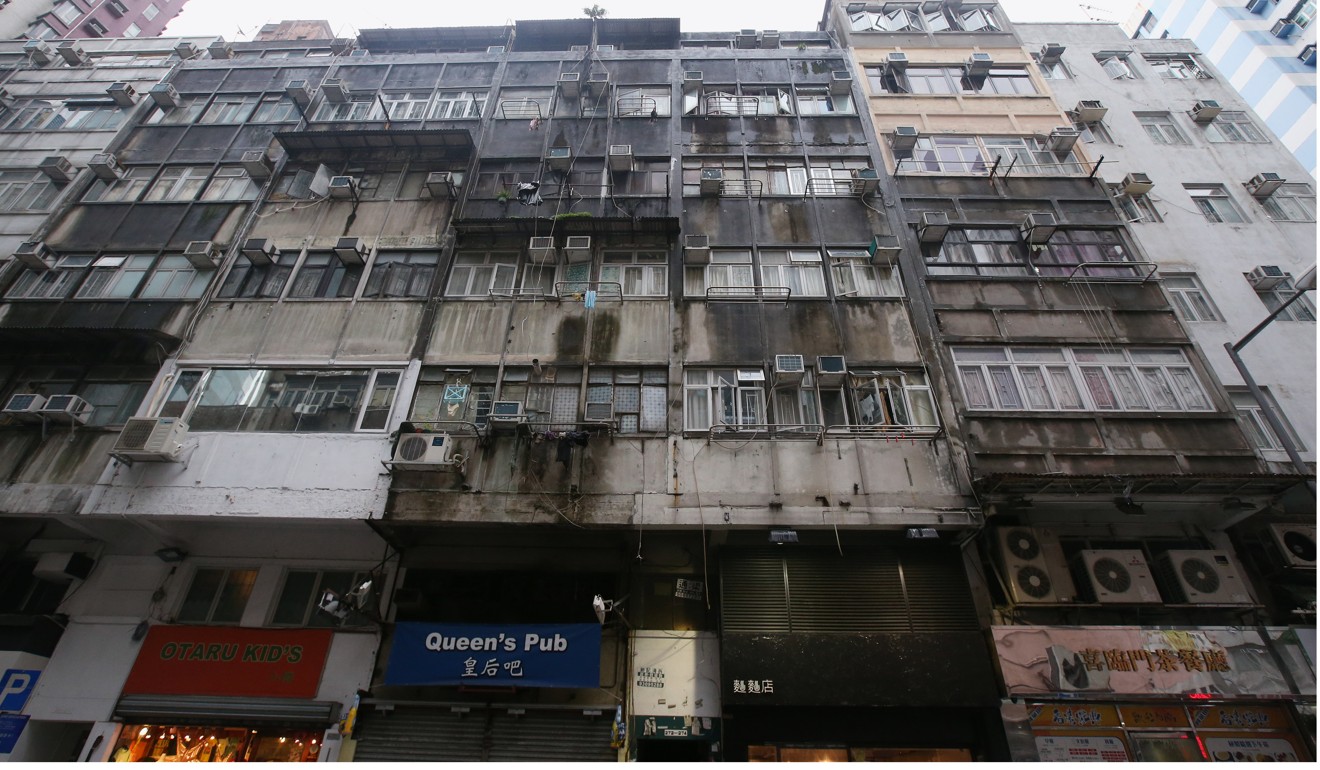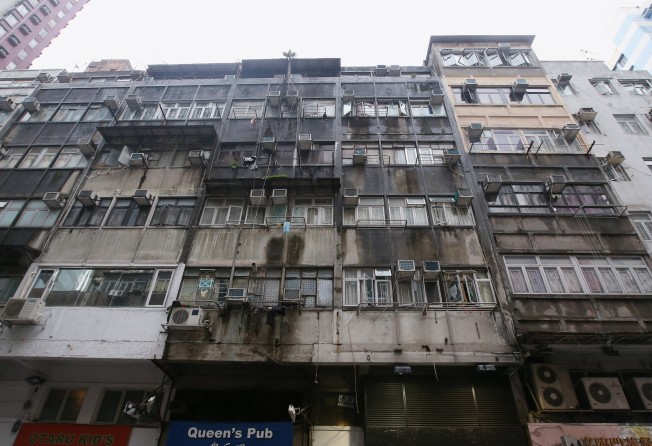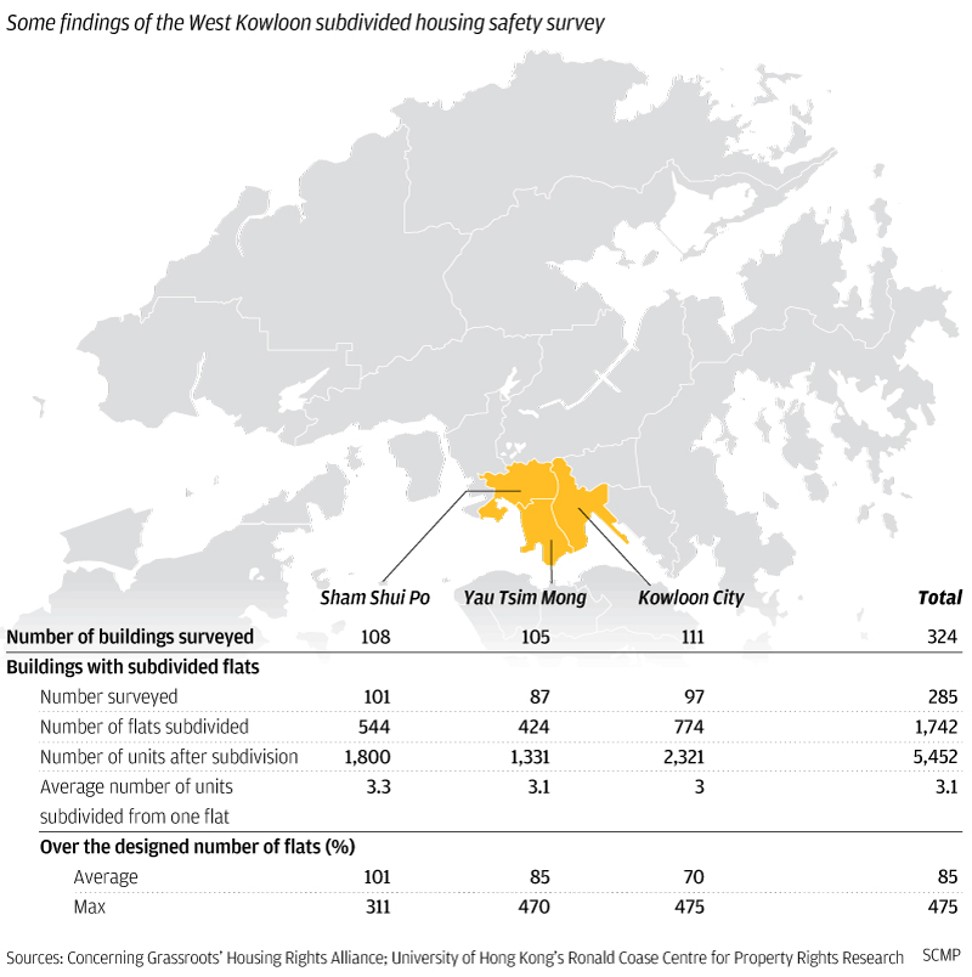
Ramshackle subdivided flats in Hong Kong’s old buildings are an ‘urban ticking time bomb’, researchers warn
Study finds cubicle homes in almost 90 per cent of aged buildings in some of city’s oldest areas

Dilapidated subdivided flats exist in almost 90 per cent of aged buildings in some of Hong Kong’s oldest neighbourhoods and are an “urban ticking time bomb” that may cause fires and outbreaks of disease, researchers have warned.
A study, released on Sunday, found cubicle homes in 285 out of 324 buildings with an average age of 55 years in Yau Ma Tei, Tsim Sha Tsui, Mong Kok, Sham Shui Po and Kowloon City.
Some 1,700 flats were subdivided into 5,500 smaller units in the buildings. In one case, a flat was split into 10 homes.
Researchers from the Concerning Grassroots’ Housing Rights Alliance and the University of Hong Kong’s Ronald Coase Centre for Property Rights Research found that some buildings housed up to six times the number of flats they were designed for, leading to overpopulation, threatening structural safety and increasing fire escape difficulties.

But less than 20 per cent of the buildings with subdivided flats had fire alarm systems, and under 25 per cent were equipped with fire extinguishers or fire hoses.
“[The substandard environment] of subdivided housing could lead to outbreaks of fire or infectious diseases,” Professor Chau Kwong-wing, director of the HKU centre, said.
“It’s an urban ticking time bomb.”
Chau said whole flats in older buildings would not fetch high rents, but subdividing them into smaller units meant there was room to raise rental value per square foot, which was attractive to owners.
Hong Kong has consistently ranked as the world’s least affordable property market. Many low-income families are forced to live in subdivided homes, often between 100 sq ft and 200 sq ft in size, while waiting for public rental housing. Rent for these cubicle homes could be more than HK$130 (US$16.66) per square foot, on a par with prices in some luxury residential neighbourhoods.
As of the end of March, there were 270,000 applicants looking for public rental housing with an average waiting time for families or single elderly applicants reaching five years and one month.
Official figures show that about 210,000 people live in some 93,000 subdivided homes.
In one case highlighted by the study, conducted between last November and May this year, two flats on the top floor of a 51-year-old six-storey walk-up in Yau Ma Tei were divided into seven units.
Researchers estimated that the partitioning added at least 7,500 pounds (3,400kg) to the floor, not including extra people and furniture. During a site visit, the Post saw cracks in the building’s walls, water seepage and concrete peeling from the ceilings.
“If every floor is like this, we are very concerned about the building’s safety,” alliance member Lee Tai-shing said.
Researchers also surveyed the internal safety of 30 subdivided flats, and found about 70 per cent had corridors narrower than the required minimum of 1.05 metres (3.4 feet). Some corridors were also cluttered with household items, further blocking fire escape routes.

Most units did not have windows or get enough fresh air.
Cheung Chi-kuen, 57, said he and his wife lived in a 100 sq ft subdivided home from 2012 to 2016. Cheung said the flat – which was split into four cubicle homes – caught fire in 2014 because his neighbour fell asleep while smoking in bed. With little ventilation, smoke quickly accumulated in the narrow corridor.
“The smoke was so thick and black I couldn’t see my way out,” Cheung said. “My hair was charred after I got out of the flat. There was a fire extinguisher near the stairway but it was extremely light when I lifted it up. I found out afterwards that it hadn’t been changed for years.”
There were no casualties in the fire.
Researchers called on the government to strengthen its fire safety inspections in old buildings and build more transitional housing for families living in substandard flats.
